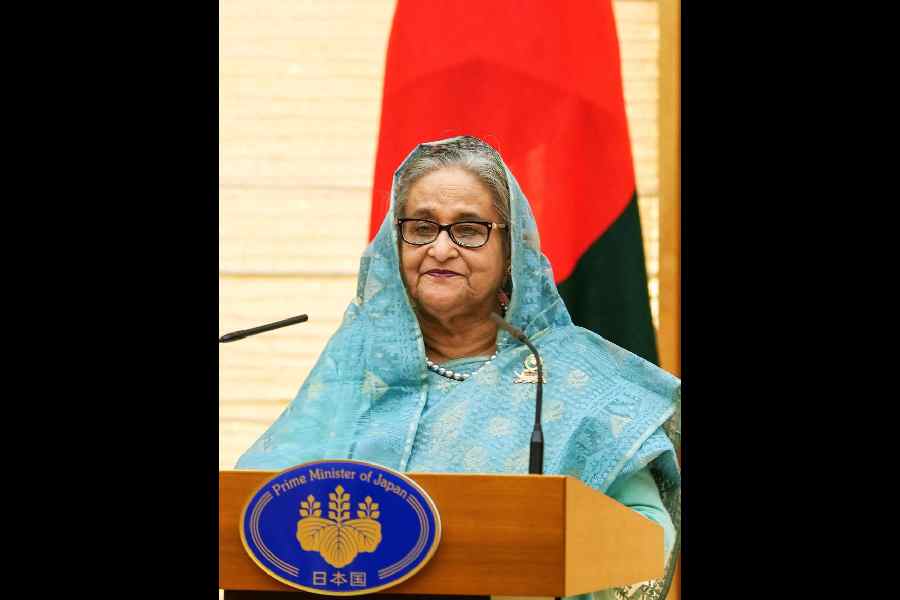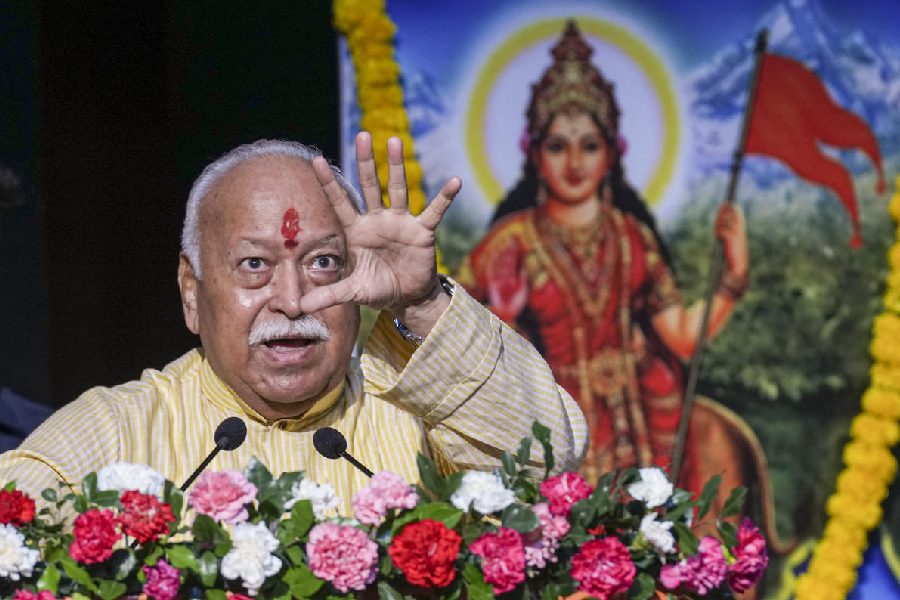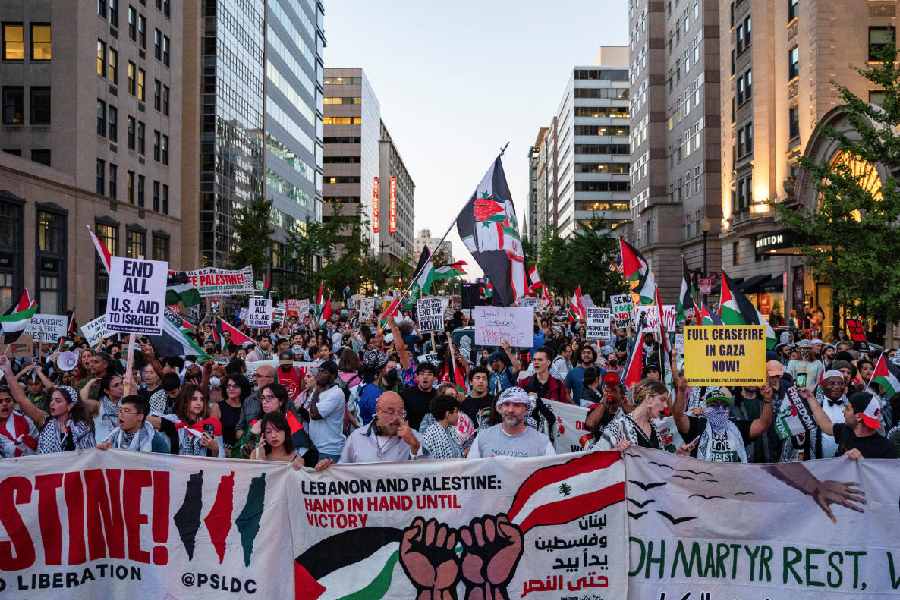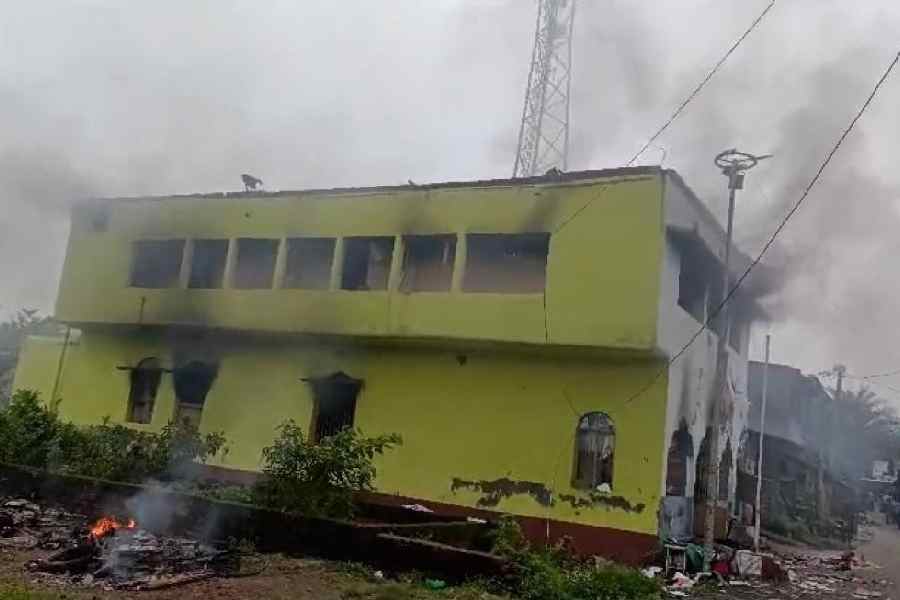A large section of Bangladeshis on Saturday celebrated the completion of two months since the fall of the Sheikh Hasina government. Another significant portion of the 175 million people in the Muslim-majority nation rued the regime change — albeit in hushed voices, fearing persecution by an apparently vengeful interim government — that has pushed the country to the brink of an economic and political crisis.
A barrage of reports have come out on the factors behind the downfall of Hasina, the longest-serving Prime Minister of the fastest-growing economy in South Asia.
Devadeep Purohit of The Telegraph spoke to key players in the erstwhile Hasina government over the last two weeks and pieced together this report, describing the fast-paced developments in Dhaka in the run-up to Hasina’s ouster.
Calcutta: Protect the airport and free the road, General Waker-uz-Zaman told the brigadier general who had called him sometime around noon on August 5, seeking directions on whether to prevent the protesters from marching towards the Prime Minister’s residence or protect the Hazrat Shah Jalal International airport.
This message from the Bangladesh Army war room, located at the basement of the army headquarters, to the commanding officer at Uttara, on the northern fringes of Dhaka, was the “game changer” that paved the way for Hasina’s ouster, a source in the armed forces said.
Multiple sources, aware of what transpired at the army headquarters and the Prime Minister’s Office in the 24 hours preceding Hasina’s fall, told this newspaper that what looked like a spontaneous “Gen Z revolution” was a “bloodless coup”, fashioned under the instructions of General Waker, whom Hasina had appointed army chief in June this year.
Four brigades — infantry, engineers, signal and air defence — under a brigadier general each were deployed at four key points in the Bangladesh capital on August 5 to thwart the Long March to Dhaka, which the student protesters had called to force Hasina out of power.
“The moment the air defence brigade personnel at Uttara removed the barricades and allowed the marchers to move towards Dhaka, our plan of protecting Gana Bhaban, the Prime Minister’s residence, went haywire. Forces at the other key points too gave in without trying to resist the marchers,” the source in the armed forces said.
He said Dhaka had remained calm till at least 11.45am on August 5 till word spread that the protesters had breached the barricades at Uttara, where a few hundred people — mostly workers from garment factories — had gathered initially for the proposed march to the Prime Minister’s residence.

Bangladesh Prime Minister Sheikh Hasina speaks during a joint press remarks with with Japanese counterpart Fumio Kishida (not pictured) at the latter's official residence in Tokyo, Japan, 26 April 2023.
“The numbers grew fast as the army stepped aside.... The marchers and common people reached Gana Bhaban. By 3.30pm, our Prime Minister had flown out of the country,” added the source, who was aware of the elaborate deployment plan drawn up on August 4 evening to protect the Prime Minister and her residence.
“The visuals of the raid on Gana Bhaban looked like a Gen Z revolution, brought about with the support of ordinary people, but it was actually a bloodless coup.”
The change of guard, however, didn’t look like a textbook coup, an event generally followed by a power grab by men in uniform. Instead, the army facilitated the installation of an interim government, headed by Peace Nobel winner Muhammad Yunus.
“Several actors, including top generals in the army, close aides to the Prime Minister and the senior-most intelligence officials, had conspired to overthrow the government using the public sentiment in favour of the students’ movement,” a key Hasina aide said.
This notion was willy-nilly endorsed by Yunus himself on September 27 when he said in New York — at the Clinton Global Initiative on the sidelines of the United Nations General Assembly — that the “revolution” was “meticulously designed”.
The wave of protests demanding her resignation that broke out in Bangladesh in July-August this year was Hasina’s first brush with a real challenge in her 21 years as Prime Minister. The protests began with a few student outfits demanding reforms to the reservation system in government jobs that they felt gave undue advantage to relatives of the 1971 freedom fighters.
Although the government did everything to meet the demand — and the country’s apex court junked the earlier reservation formula — the protests metamorphosed into a larger movement in a few weeks, forcing Hasina to impose a curfew and deploy the armed forces.
The strong-arm tactics failed to quell the unrest and at least 400 people died between July 16 and August 4, according to a report by the United Nations Human Rights Office.
Several of Hasina’s aides — who fled Bangladesh to escape persecution by the new regime that is pressing murder charges against all and sundry, from journalists to civil rights activists — admitted in private conversations that the Awami League government had made “huge mistakes” in the last 15 years, alienating a large section of society.
Some of them conceded that the handling of the student protest was “full of flaws”, adding that the Prime Minister had not been properly briefed about the situation.
“The student movement gave ordinary people an opportunity to come out on the streets and vent at us their pent-up anger, which owed to a variety of reasons such as unbridled corruption and growing authoritarianism,” an Awami League insider, considered a mass leader by his party, said.
The regime change would, however, have been “impossible” without the active support of the army chief, whom Hasina had handpicked a few months earlier, and some “other actors” whom she trusted implicitly, the politician said, echoing the source in the armed forces.
According to the source in the forces, General Waker did “precious little” to implement the foolproof plan that had been drawn up at Gana Bhaban on August 4 evening in the presence of Hasina, the three service chiefs, senior ministers and key aides to the Prime Minister.
Although nerves were taut at Gana Bhaban that evening, ahead of the long march, the mood changed after a plan to deploy around one lakh men in uniform — 50,000 from the armed forces, 25,000 from the police and 25,000 from Border Guard Bangladesh — was finalised and necessary instructions were sent out.
“This plan remained only on paper.... None of the forces got the number of personnel they were supposed to bring in,” the source in the armed forces said, hinting at a conspiracy.
He wondered whether the army chief had passed the necessary instructions for the proper enforcement of the curfew.
“People in Bangladesh take the army seriously.... Had the force done its job, the protesters could not have gathered for the Long March,” he said.
“Besides, the army chief had assured the Prime Minister of impregnable security around Gana Bhaban…. He had also promised to fortify Dhaka. But in reality, he told the brigadier general at Uttara to step aside when people began marching towards Gana Bhaban.”
Several Bangladeshi media outlets have reported that the possibility of large-scale bloodshed was the main reason behind the army chief’s decision to allow the protesters to move towards the Prime Minister’s residence. There were also unconfirmed reports that said Hasina didn’t want any “bloodshed” and “offered to resign”.
“The question is not about the possibility of bloodshed, it is about whether there was even any feeble attempt to prevent the marchers. The answer is a resounding ‘no’ and that’s why it’s a coup,” a close aide to Hasina, who was with her in the hours before she flew out of Bangladesh, said.
Some others, who had been with Hasina in her final hours as Prime Minister, recounted several developments in that period that lend credence to the conspiracy theory.
“Salman F. Rahman, a key adviser to the Prime Minister, was creating panic at Gana Bhaban even before the situation began to spin out of control…. During the government’s last 10 days, while everyone was busy thinking of how to solve the crisis, he tossed up the idea of the Prime Minister resigning several times,” a source, who had been a regular at emergency meetings at Gana Bhaban, said.
“He was bringing down the collective morale at Gana Bhaban by constantly talking about exit-and-evacuation plans in case the Prime Minister’s residence came under attack.”
Multiple sources confirmed that Rahman’s insistence had at one point prompted Hasina to tell her aides that she would resign and go to Tungipara, the Sheikh family’s ancestral home in Gopalganj.
Although she later dropped the idea and remained firm till her last day in office, multiple sources told this correspondent that the behaviour of Rahman — who had always enjoyed a good relationship with Washington despite Hasina’s testy ties with the Joe Biden administration — was suspect.
“In retrospect, it appears that he was also part of the forces that plotted a regime change,” said a former MP, recounting how Rahman had prevailed on Hasina to cancel a show-of-strength rally that the Awami League had planned for August 1.
“It’s true that the government was in crisis.... But we could have easily got at least five lakh people and challenged the narrative that the Prime Minister’s days were numbered. We did not get that chance because of people like Rahman,” the ex-parliamentarian said.
Some of Hasina’s aides told this newspaper that top officials of the Directorate General of Forces Intelligence (DGFI) did not do their job properly, hampering proper planning during the student protest.
“Some of us had felt that a meeting between the Prime Minister and the student leaders might avert the crisis…. The DGFI and some of her aides thwarted any such move,” a Hasina aide said.
According to this source, an assessment of the role played by Waker, Rahman and some top DGFI officials indicates that they had acted in tandem.
“There is a buzz in the armed forces and also in the intelligence wings that domestic actors had implemented a plan hatched by foreign forces,” the source in the armed forces summed up.
“The involvement of foreign forces in the regime change may be difficult to establish, but there is little doubt that the army chief, one of the Prime Minister’s key advisers, and senior intelligence officers had conspired to bring the government down.”











